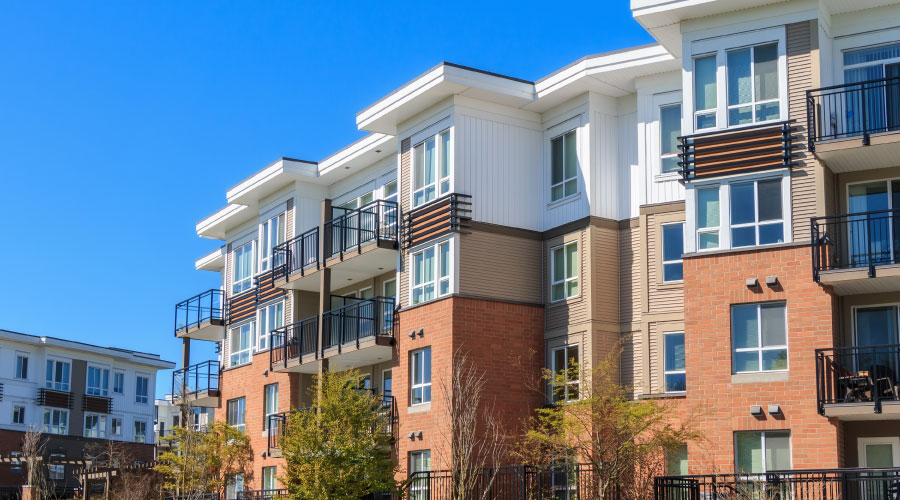Buying real estate improved by an existing building is in itself a legally intricate undertaking. However, new construction and renovation introduce a whole new level of complexity, difficulty, legal complication and financial risk.
This blog entry explores just one of those categories of added risk in the construction and renovation arena: mechanics liens. This article also is not the definitive, all-encompassing explanation of the Ohio mechanics lien statute (it has a multitude intricacies). Rather, we provide herein three (or four) simple steps to assure that the extraordinary “muscle” added by mechanics lien claims is not applied against you as a property owner.
General risks of real estate investing
In short, real estate investing is not for amateurs or the faint of heart. Many of the entries on this blog explore how to avoid pitfalls associated with real property acquisitions involving existing improvements, such as issues relating to matters of title, tax, physical defects in the property and improvements (and seller fraud relating to the same), zoning, land use and other regulatory hurdles, and seller fraud in financial misrepresentations, just to name a few.
Additional risks inherent in new construction and building renovation
However, taking raw land or a developed lot (the difference being built roadways, utilities, addressing zoning and full subdivision) and building a new structure, or renovating an existing structure, are fraught with a host of added risks: Proper planning and design, zoning and land use restrictions, utility access, building code permitting and inspections, selecting an honest and qualified contractor who has a corral of qualified subcontractors, materialmen and laborers. The list of added complexities associated with adding improvements to real estate is almost endless. Properly executing a construction project from beginning to end is difficult. That difficulty today is enhanced by the lack of availability of skilled labor and subcontractors, increasing pricing and drawing into the field entirely unqualified, untrained and unsupervised laborers.
The special risks associated with mechanics lien
One of the biggest legal challenges is protecting property owners and lenders against mechanics liens from contractors, subcontractors, materialmen and laborers on the project.
What is a mechanics lien?
Mechanics liens (not at all for what we think of as “mechanics” in normal parlance) are purely creatures of statute, meaning they don’t exist as a matter of contract nor are they common law rights. Rather, R.C. §1311.011 (one- and two-family residential dwellings) (addressed partially in this blog entry) and R.C §1311.02 (commercial properties) provide statutory lien rights to unpaid contractors, subcontractors, laborers and materialmen. All of these rights are strictly limited in time, amount and circumstances allowed by statute.
These statutes provide a tremendously powerful tool for these parties to assure payment from the property owner, secured firmly by the equity in the property, so long as their claim is narrowly allowed under the statute, and those rights will not extend beyond the statute. (The effective date of priority of liens as against mortgages and other lien holders is yet another a matter not addressed in this entry.)
These lien rights can transcend the contractual obligations of the property owner, meaning an owner can in fact owe money to someone with whom he has no contract at all (the owner may never have known their name or that they did work on his job, or supplied materials to his job). An owner can, under some circumstances, owe money to a subcontractor, materialman or laborer even though he already has paid everything he owes to the general contractor (this principle applies to commercial projects only). These can be jarring revelations to an unsuspecting property owner who has not taken the simple steps in this blog entry to protect himself from mechanics liens. In other words, unaddressed, this is dangerous territory for a property owner making improvements to his property.
Three simple steps an owner can employ to protect himself from mechanics liens
Again, the Ohio mechanic’s lien statutes are tremendously involved, and this blog entry is not attempting to explore the many intricacies in that statute. That’s for another day. Rather, this article offers a few simple steps that a property owner undertaking a construction project can employ to avoid the potential of financially and legally catastrophic consequences from liens sinking a project or ruining the finances of a property owner.
- Pay no more to the contractor than the true value of work actually completed as of the draw, and perhaps less. In some ways, this step is self-explanatory. As a construction project progresses, the owner should take great care to pay the contractor only for the value to the owner and the project of the work finished at the time of payment. In a reverse analysis, the owner should always have enough money left in his construction budget to finish the job if the contractor walks away after the most recent payment. Now, estimating these two amounts (the value of work completed and remaining cost to complete) is tricky, and the owner should realize that the contractor — knowing the construction costs and business better than him — is in a superior position to estimate this, but relying on the contractor’s “word” is equally risky. So, this step requires the owner to have a good understanding of the real cost of each stage of the work. It also requires assuring the work completed at each stage is code compliant, contract compliant, and of good quality and workmanship. Beyond this step, many owners will require “retainage” of an addition 10-20% from the “actual value of the improvements to date” to assure there is always enough left in the construction budget to complete the project. This retainage is then paid at the end of the project (usually upon issuance of a certificate of occupancy, “substantial completion” as certified by the architect or some other objective metric).
- Affidavits of full payment. As each installment (or “draw”) of the construction budget is paid to the general contractor, the general contractor should provide an affidavit — a sworn statement, the falsity of which is a felony and the basis for a civil fraud claim– of what he is owed, and critically, the names of each subcontractor, materialman, and laborer, and the amounts owed at that stage to each. In good practice, that “master affidavit” is then also accompanied by further affidavits from each subcontractor, materialman and laborer as to the amounts they are owed at that point in the project.
- Joint checks. Then, the owner should cut joint checks to (a) the contractor and (b) each subcontractor, materialman and laborer, to assure that the amounts they themselves swear are due and owing are in fact paid in full. These joint checks should track the sworn statements in the various affidavits.
If a property owner on a project follows these three simple steps, the risk of a mechanics lien is limited to (a) those subcontractors, materialmen and laborers not listed on the affidavits (falsely) and (b) only those claims for additional work arising from the most recent payment.
Beyond these three simple steps, a one-to-two family residential property owner is also protected from liens of subcontractors, materialmen, and laborers to the extent that he has paid the general contractor in full, or is limited only to the amounts owed under the master contract to the general contractor. That statutory principle is more fully explored here.
- Lien waivers. A drastic fourth protection that can be employed by a property owner is to allow no contractor, subcontractor, materialman or laborer to step foot on the job or to supply materials to the job unless they have signed in advance a lien waiver, saying (a) in the case of the contractor, they will look only to the contract (and the courts in a typical collection action) to assure payment and (b) in the case of subcontractors, materialman and laborers, saying they will look only to the general contractor for payment, not to the owner and not to a lien against the property. These lien waivers, heavy-handed and unusual as they may be, are legally effective.
So, there is much much more, legally and business-wise to being successful in the execution of a of residential or commercial construction project, and so much more of a winding path in the Ohio mechanics lien statutes, but these three (or four) simple steps can change the dynamics of a construction project strongly in favor of the property owner.
For assistance with mechanics lien issues or other legal challenges relating to new construction, feel free to contact me at 513.943.6655.









